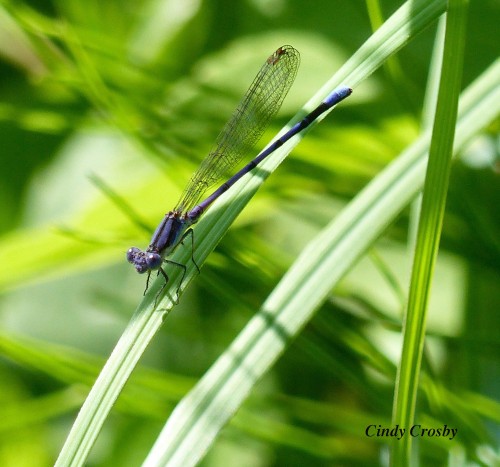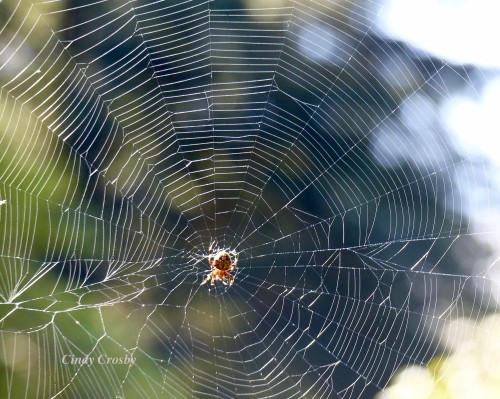“The world is a confusing and turbulent place, but we make sense of it by finding order… . This makes us all pattern seekers. “– Philip Ball
*****
High heat and cool breezes; thunderstorms and calm mornings. From my hammock overlooking the backyard prairie patch, I’m astonished at the rapid growth of plants under the hot sun, watered by frequent rain showers. I swear I saw cup plants grow an inch right before my eyes! Anything seems possible in the bright light and blue skies of July.

As I swing in my hammock, I’m reading a new book from University of Chicago Press: Patterns in Nature. It’s a revelation. As an art and journalism student in my undergrad years, I avoided math as much as possible. Now, I’m discovering the beauty of mathematics on the prairie. Symmetry. Fractals. Surface tension.
So many different combinations of patterns in July! I’ve always been intrigued by patterns in nature. But I didn’t understand much about what I saw.

Paging through Philip Ball’s book, I begin with symmetry, which Ball says, is at the root of understanding how patterns in nature appear.
It’s an eye-opener.

Ball notes that “Bilateral symmetry seems almost to be the default for animals. Fish, mammals, insects, and birds all share this attribute.” I see this in the blue-fronted damselfly above; in the mirror-image wings of a skipper butterfly below. Divide them in half and each side is essentially identical.

It’s evinced in the reversed haploa moth, barely visible, deep in the tallgrass.

There is bilateral symmetry in a bison’s skull, with a few imperfections.

Or a monarch’s wings, even when tattered and worn.

Who wouldn’t marvel at the folded, paired symmetrical wings of the male violet dancer damselfly?

Once you begin looking for patterns in the natural world…

…you see them everywhere.

Fractal geometry, Ball writes, is said to be “the geometry of nature.” Fractals? What’s a fractal? “Don’t know much algebra…,” sang Sam Cooke in his classic, “(What a) Wonderful World.” Yup. But I want to know more.
Ball boils it down to this: Look at a tree. A part of the tree, he writes, can resemble the whole, as the “tree algorithm” keeps making the same kind of structure repeatedly. As I hike the prairie one afternoon, I look up and all of the sudden it makes sense—once I understand what I’m looking at.

“Growing fractals” are a type of fractal found in the network of arteries, veins, and capillaries in the vascular system—another “branching” effect, Ball tells me. I think of the “arteries” running across prairie dock leaves, so pronounced in the autumn.

I reflect on these concepts and my head aches. Fractals. Symmetry. So fascinating. So…complex. I regret now my ability to dodge everything math-related in college except for a course called “Cardinal Numbers.” A sort of 101 math for art majors. But maybe it’s not too late?
Early one morning, wading Clear Creek at Nachusa Grasslands, I admire the dew drops. I remember reading in Ball’s book that beads of water are driven by surface tension. Simply put, he says, surface tension pulls dew and rain into these “droplet” shapes, and gravity helps flatten the droplets. Ahhh. Look at that. Yes.

A different sort of pattern. I search for water droplets: on leaves, spiderwebs, even dragonfly wings. Each dewdrop has heightened meaning.
As I continue reading, chapter after chapter, then go for hikes to explore the different patterns in Ball’s book, his simple explanations for a non-scientist open up a new world for me. A world where math seems a little more applicable. A little more accessible. A little more…meaningful. Perhaps, though, the best moment in Ball’s book is when he writes that the law of pattern formation is driven by wonder.

“We need to marvel and admire as well as to analyze and calculate,” Ball writes. Oh, yes. I’ve always been attuned to wonder; marveling comes without effort for me. Now, I’m learning the other side of the equation. Such an astonishing world!
So many “patterns” to marvel at and admire in the month of July on the prairie. Why not go see?
******
Philip Ball is the former editor for Nature. The quotes in this post are from his book, Patterns in Nature: Why the Natural World Looks the Way it Does (University of Chicago Press, 2016). Check it out here.
****
All photos copyright Cindy Crosby (top to bottom): July on the Schulenberg Prairie, The Morton Arboretum, Lisle, IL; monarch caterpillar (Danaus plexippus) on butterflyweed (Asclepias tuberosa), Schulenberg Prairie, The Morton Arboretum, Lisle, IL; blue-fronted dancer damselfly (Argia apicalis), Schulenberg Prairie, The Morton Arboretum, Lisle, IL; silver-spotted skipper (Epargyreus clarus), Schulenberg Prairie, The Morton Arboretum, Lisle, IL; reversed haploa moth (Haploa reversa), Schulenberg Prairie, The Morton Arboretum, Lisle, IL; bison (Bison bison) skull, Nachusa Grasslands, The Nature Conservancy, Franklin Grove, IL; monarch butterfly (Danaus plexippus) on rattlesnake master (Eryngium yuccifolium), Schulenberg Prairie, The Morton Arboretum, Lisle, IL; violet dancer (sometimes called variable dancer) (Argia fumipennis violacea), Schulenberg Prairie, The Morton Arboretum, Lisle, IL; gray-headed coneflower (Ratibida pinnata) seedhead, Schulenberg Prairie, The Morton Arboretum, Lisle, IL; orb weaver (family Araneidae) spider web, Brown County State Park, Nashville, IN; tree leafing out on the edge of the Schulenberg Prairie, The Morton Arboretum, Lisle, IL; prairie dock (Silphium terebinthinaceum), Schulenberg Prairie, The Morton Arboretum, Lisle, IL; water droplets along Clear Creek, Nachusa Grasslands, The Nature Conservancy, Franklin Grove, IL; glade mallow (Napaea dioica), Schulenberg Prairie, The Morton Arboretum, Lisle, IL.
Cindy’s Classes and Speaking
August 2, 8-11:30 a.m., Prairie Ethnobotany: How People Have Used Prairie Plants Throughout History, The Morton Arboretum, Lisle, IL. Register here.
August 12, 7-8:30 p.m., Dragonflies and Damselflies: The Garden’s Frequent Fliers, Fox Valley Garden Club, Aurora, IL. Free and open to the Public. Details here.
August 19-22, 8-5 p.m. daily, National Association for Interpretation Certified Interpretive Guide Training, The Morton Arboretum, Lisle, IL. Register here.
August 29, 7-8:30 p.m., Summer Literary Series: Tallgrass Conversations: In Search of the Prairie Spirit. Hope aboard the Morton Arboretum’s tram and enjoy a cool beverage, then listen to Cindy talk about the “prairie spirit” on the beautiful Schulenberg Prairie, the fourth oldest prairie restoration in the world. Register here.
See more at http://www.cindycrosby.com

That sounds like a great book. Does he talk about the Fibonacci sequence? I bet you’d have fun exploring that. 🙂
LikeLiked by 1 person
Hello, Kim–It’s one of the few mathematical patterns I was familiar with! For those of you who aren’t familiar with Fibonacci, it is a sequence of numbers that relates to spiral patterns found in nature (sunflowers, pine cones) and Ball has some amazing images paired with his text; I just skipped ahead to take a look after seeing your comment. I’ve not gotten to that part of the book yet; I’m trying to read it slowly (not my usual MO) and really understand what I’m reading. Whew! It’s a lot to take in, and all of it complex and wondrous. Thank you for taking time to read and to comment. I always look forward to your blog, Nature is My Therapy! Readers, please check it out — you’ll love Kim’s thoughts and images.
LikeLiked by 1 person
Marvelously thoughtful post!
LikeLiked by 1 person
You are so kind! The tallgrass prairie is certainly my classroom, so much to learn each week out there…. Thank you, Michael, for reading and taking time to comment! Hope you are having a great summer.
LikeLike
Great article! I love the geometry in nature. To me, it’s the patterns that create the symphony. I’m going to have to look into that book.
LikeLike
Sheila, what a lovely compliment. Thank you. Do check out Philip Ball’s book — the images alone are worth the price of admission, but the text is thoughtful and yet, accessible. I’m really enjoying it. I’ve always loved patterns in nature, but knew very little about the math behind them. Fascinating stuff! Thank you for reading and taking time to comment! Happy Summer!
LikeLike
I haven’t seen Ball’s book. I’ve seen raves about the beautiful illustrations. I couldn’t help but think of larger patterns in nature, too: spatial, temporal and the geographic distribution of living things. What explains them?
Again, and more importantly I love the way you always join knowing and appreciating. They inform one another and deepen my understanding and love of places like prairies. Thanks again.
LikeLiked by 1 person
Hello, Ed, and wow yes — those raves for the illustrations are justly deserved. So many patterns! So much to learn. I’m still in the early pages of his book, and looking forward to learning more about waves, spirals, spots and stripes…well, there’s plenty here to keep me busy all summer, it seems! Thanks for your lovely, lovely compliment and for taking time to read the blog this week. Hope you see lots of beautiful patterns this week!
LikeLike
Thanks Jeanne,
I’m going to take my time reading this…it seems absolutely beautiful! Thanks for sending!
On Tue, Jul 9, 2019 at 7:24 AM Tuesdays in the Tallgrass wrote:
> Cindy Crosby posted: “”The world is a confusing and turbulent place, but > we make sense of it by finding order… . This makes us all pattern > seekers. “– Philip Ball ***** High heat and cool breezes; thunderstorms > and calm mornings. From my hammock overlooking the backyard pr” >
LikeLike